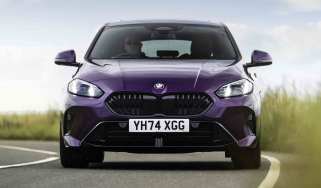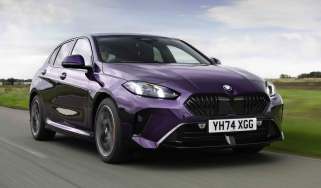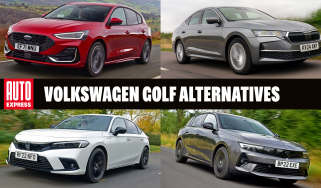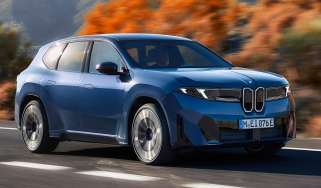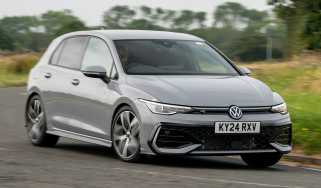New BMW 1 Series up for total reinvention in 2027: design, tech and full details
The popular premium hatchback will be reborn in the Neue Klasse era with huge tech and spec upgrades
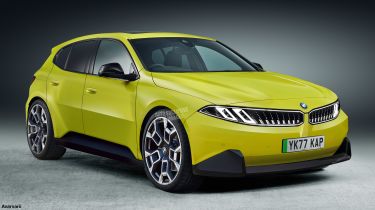
The big-selling BMW 1 Series needs to be reinvented if it is to continue operating in key European markets, brand boss Bernd Koerber has revealed. The plans will most likely see the firm launch electric and hybrid versions of the popular hatchback in tandem, as previewed in our exclusive images, when the current model is replaced in 2027.
“It has never been a question that we step out of the small-car segment”, Koerber told Auto Express in an exclusive interview at the 2025 Shanghai Auto Show. “There are many markets where that is highly relevant; go to Greece, go to Spain, go to Italy – take out the 1 [Series] and that’s one-third of your business. So, if you’re a global player, you had better do things in your home markets which are relevant.
“[Secondly], it’s a very important [car], because what you see in the 1 Series is the highest share of younger drivers. How else are you going to get [those] people into the brand?”
The 1 Series, for two decades, has acted as a profitable entry point into BMW ownership, and an important model for conquest sales. As Koerber has hinted, the hatchback also has one of the youngest demographics of any model in the brand’s line-up.
Koerber continued: “The third one, a benefit of having MINI in the BMW Group, which is sometimes overseen, is that the small-car segment forces you into clever solutions – cost-efficient [ones]. If you step out of the small-car segment, what you lose is the perspective of clever, cost-efficient solutions; in a small-car segment you are forced into it.”
BMW’s senior vice president for brand, product management and connected services went on to state that while car companies often use flagship models to develop innovative, high-cost technology, the same is possible the other way around.
“Once you find [solutions], you can use them also in higher segments where they apply,” he said. “If you ever forget that you have to do a lot with a little, you lose the ability altogether.”
It means the 1 Series could quickly follow in the footsteps of the 3 Series, which is due to be replaced by the Neue Klasse saloon next year – shortly after the all-new iX3 is revealed at the Munich Motor Show in September.
What will power the new BMW 1 Series?
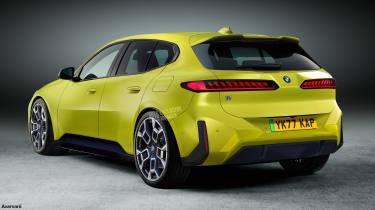
These models will be launched with both electric and hybrid powertrains from the outset – with one platform servicing both propulsion types. We know the architecture can be adapted with different wheelbases, making it easy for the brand to fit a 1 Series-sized body for the small-car class.
Following BMW’s well established naming structure, we expect the petrol car to maintain the current model’s badging, with designations such as 120, 123 and M135 – possibly with an ‘e’ to signify plug-in hybrid tech. There will also be an electric model which will use the i1 moniker.
The now six-year-old F40/F70-generation 1 Series should see its lifespan come to a natural end by 2027, or possibly early 2028 – meaning a Neue Klasse-styled hatchback is still at least a couple of years away. If you like the idea of a new BMW hatchback, why not check out Auto Express’s Buy A Car service.
What will the new BMW 1 Series look like?
Its design is almost certainly going to reference the next 3 Series, and while we’ve not yet seen the production version of that car, we have a good idea of how it will look.
We expect the new 1 to get a smoother front end, matched to a new take on the firm’s famous kidney grilles that stretches the width of the car and will echo the appearance of the next 3 Series. We’re also likely to see plenty of M-inspired details, big wheels and sharp creases, plus flush door handles to make the car as aerodynamically efficient as possible.
Don’t expect the electric and hybrid versions to differ visually – at least not significantly – because they are more likely to follow the trend championed by the current petrol 5 Series and i5 EVs. The 1 Series is likely to keep its hatchback shape, mostly because the X1 and iX1 already fill the firm’s small SUV requirements, and will continue to do so beyond the end of the decade – this style of car is still strong in BMW’s home market.
How about the interior?
Inside, the 1 Series should get the maker’s latest panoramic iDrive infotainment system, scaled down for both cost and size considerations. We’ll see the usual dark trim and body-hugging sports seats on top-spec versions, plus big-car kit such as wireless phone charging and in-built app connectivity – including the ability to access certain functions from your smartphone. It’ll be continuously connected, too, with the ability to receive over-the-air (OTA) software updates.
The new platform should also see a boost in practicality – not a 1 Series strong point previously– with the longer wheelbase resulting in significantly more rear legroom. A projected boot-capacity figure of around 400 litres would make it more practical than its predecessor, too, if a little short of the class best.
The scalable Neue Klasse tech should also allow BMW to keep a lid on costs, at least to some degree, particularly given Koerber’s comments about wanting to maintain a strong presence in important European markets that haven’t yet embraced electric cars and prefer traditional bodystyles.
Want the latest car news in your inbox? Sign up to the free Auto Express email newsletter...
Find a car with the experts



